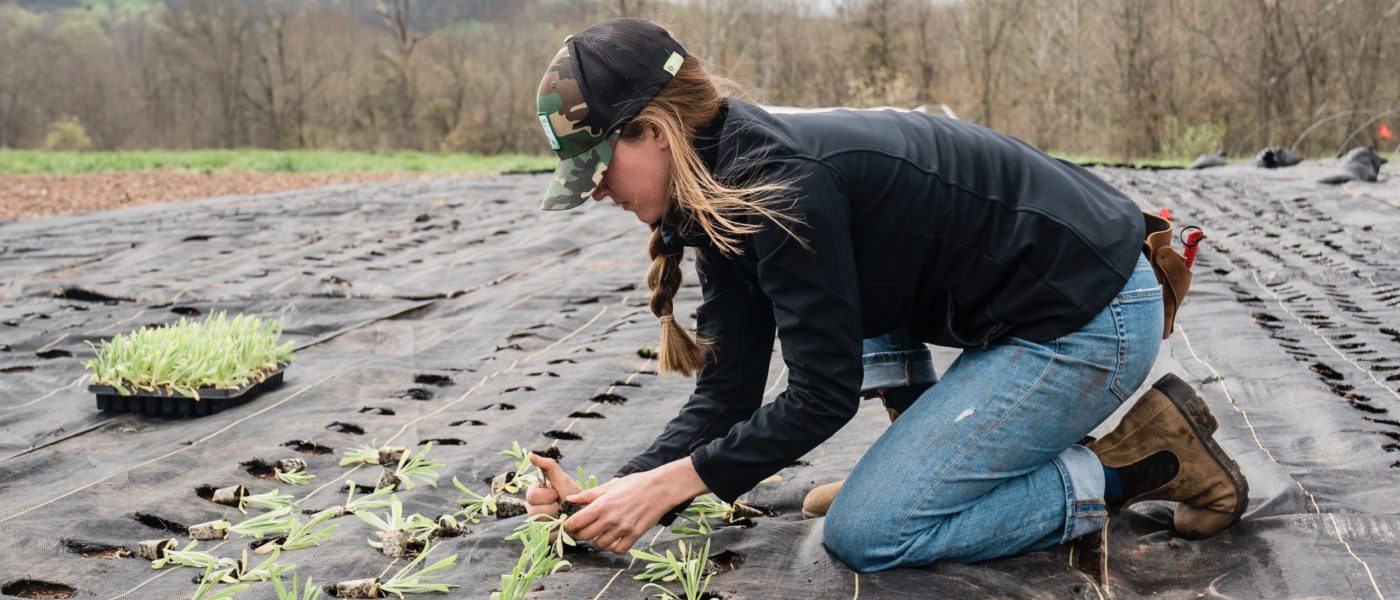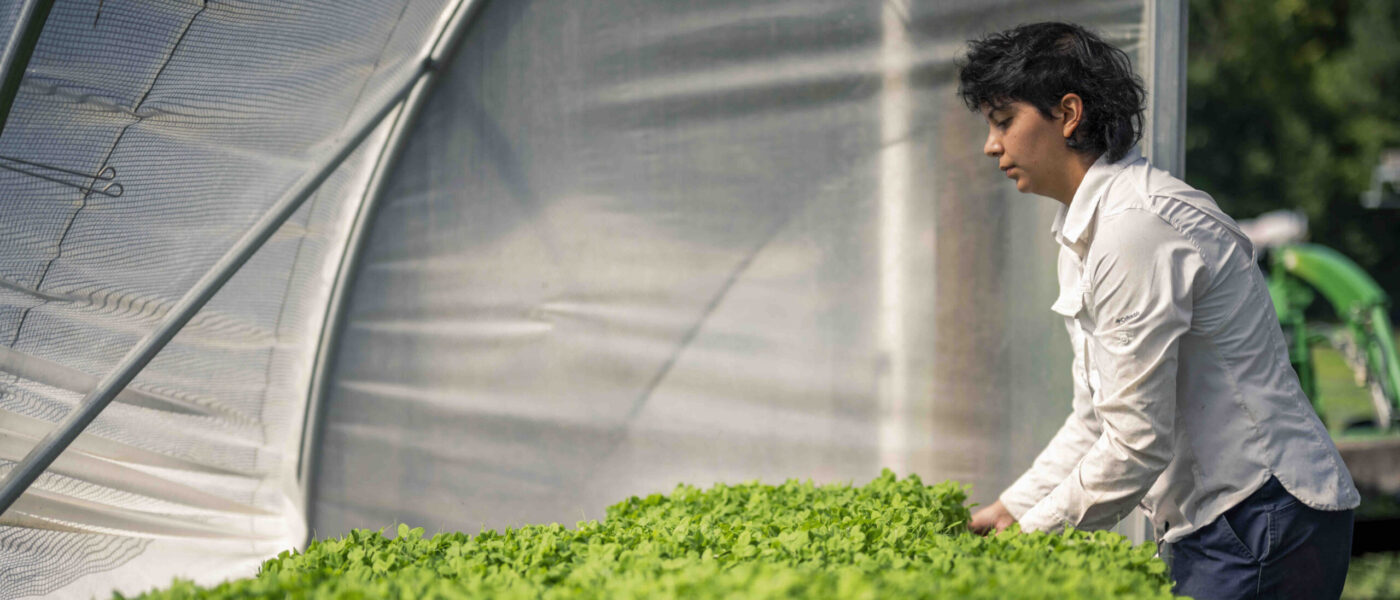On June 1, United States Department of Agriculture (USDA) Secretary of Agriculture Tom Vilsack announced the USDA Framework to Transform the Food System. The framework builds on lessons learned about the vulnerability of our food system during the COVID-19 pandemic and the Russian war on Ukraine.
Farm Aid is very pleased to see this forward-looking investment to transform the food system for eaters, and to strengthen farmers and ranchers, and rural communities. The framework supports USDA’s crucial goal of creating a more fair, equitable, and sustainable farm and food system. As the challenges of the last few years have shown us, it is essential to strengthen our food system, promote greater competition and fairness, build resiliency, and generate greater economic opportunity for small and medium scale farmers and ranchers.
The goals of USDA’s Food System Transformation framework include (click on each bullet point to expand and read more):
- Building a more resilient food supply chain that provides more and better market options for consumers and producers while reducing carbon pollution.The pandemic and recent supply chain disruptions have revealed the perils of a national food system that depends on capacity concentrated in a few geographic areas and requires many steps to get from farm to fork. In order to be more resilient, the food system of the future needs to be more distributed and local. Having more capacity to gather, process, move and store food in different geographic areas of the country will provide more options for producers to create value-added products and sell locally, which will support new economic opportunities and job creation in rural communities. Additional regional capacity will also give consumers more options to buy locally produced products—helping ensure food is available to consumers—and reduce the climate impact of our food supply chain.
- Creating a fairer food system that combats market dominance and helps producers and consumers gain more power in the marketplace by creating new, more and better local market options:Just 14 cents of the food dollar go to producers on average – in large part because producers’ power in the marketplace has declined over the past 50 years with increased consolidation in the food system. Today, just a handful of companies dominate meat and poultry processing and just a few multi-national companies produce most brands and products on supermarket shelves. Right now, input prices and food prices are up—but so are the profits of major food companies and national supermarket chains. Covid has revealed the perils of a food system dominated by a few corporate players. USDA’s investments will deliver a better deal for farmers, ranchers, growers and consumers.
- Making nutritious food more accessible and affordable for consumers:The pandemic exposed and exacerbated the challenges of food and nutrition insecurity in this country. A family in the United States not having access to affordable, nutritious foods is unacceptable. Hard-pressed families—including those who depend on school meals, SNAP, and seniors on fixed incomes—may have limited food options and some communities have been underserved by grocery stores and food retailers, making it difficult to access healthy food. USDA is committed to ensuring every American family has access to affordable, nutritious foods. That is why USDA’s Food System Transformation framework includes programs to ensure all consumers are able to access fresh, healthy, nutritious food.
- Emphasizing equity:For too long, rural communities, underserved communities, communities that experience persistent poverty, and the people who live there have been left behind. Where you live should not determine a fair shot to economic opportunity. It is in these communities where most of our food comes from; where most of the water that we drink comes from; and where most of the energy we consume comes from. USDA’s Food System Transformation investments will create more economic opportunities for these communities and allow them to retain more of the food system dollar. This will speed the transition to more equitable growth, with the wealth created from these communities remaining in small towns and underserved communities, helping to lift them out of poverty. The announcement supports the Biden-Harris Administration’s broader work to strengthen critical supply chains as directed by Executive Order 14017, America’s Supply Chains. Funding is provided by the American Rescue Plan Act and other relief legislation.
Announcing the framework, Secretary Vilsack said,
“A transformed food system is a part of how we as a country become more resilient and competitive in the face of these big and future challenges and threats. I believe a transformed food system will make it easier to adapt to and mitigate the severe consequences of a changing climate while not sacrificing agricultural production by reducing the carbon footprint of food production. I believe a transformed food system would deliver a better deal for farmers, ranchers, growers, and consumers through more, new, and better markets while also stimulating the rural economy. I believe a transformed food system also leads to better health outcomes for Americans by increasing access to healthy locally grown food and lowering healthcare costs for all. I believe a transformed food system will sustainably produce more food, allowing the United States to meet its global responsibility through exports and donations to ensure global food security.”
Some highlights related to Farm Aid’s priorities:
Food Production
- Up to $300 million to support farmers transitioning to organic production.
- Up to $75 million to support urban agriculture, expanding access to nutritious foods, fostering community engagement, increasing awareness of climate change and mitigating the effects within urban areas, providing jobs, educating communities about farming, and expanding green spaces.
Food Processing
- Up to $375 million in support of independent meat and poultry processing plant projects that fill a demonstrated need for more diversified processing capacity.
- Creation of a robust technical assistance network to support participants in USDA’s meat and poultry supply chain initiatives.
- Up to $275 million in partnership with lenders to address the credit access gap for meat and poultry processing projects because lenders have been reticent to invest in the meat and poultry sector without incentives to do so given the risk profile and lack of experience in the sector.
- Up to $600 million in financial assistance to support food supply chain infrastructure that is not covered by the meat and poultry processing program. USDA will make investments to address the limited processing, distribution, storage, and aggregation capacity for a variety of food sectors, including high equipment costs, lack of competition, and limited supply chain and value chain coordination.
Food Distribution & Aggregation
- Investment of $400 million to create regional food business centers that will provide coordination, technical assistance, and capacity building support to small and mid-size food and farm businesses, particularly focused on processing, distribution and aggregation, and market access challenges.
- $60 million to support increased procurement and use of local foods in child nutrition program meals through Farm to School programs.
- Up to $90 million to prevent and reduce food loss and waste. The United States wasted $408 billion worth of food in 2019 – more than a third of the total U.S. food supply. Wasted food results in unnecessary uses of energy as well as methane and CO2 emissions; reducing food waste can help the United States meet its climate commitments.
Markets & Consumers
- Increased funding of the Healthy Food Financing Initiative to increase access to healthy foods, provide new market opportunities for farmers and ranchers, stabilize small and independent retailers, and create quality jobs and economic opportunity in low-income communities.
- An additional $50 million in the Senior Farmers Market Nutrition Program to increase access to locally grown fruit and vegetables by seniors.
- An additional $40 million in the Gus Schumacher Nutrition Incentive Program (GusNIP) Produce Prescriptions Program to provide fresh produce prescriptions to increase fresh fruit and vegetable consumption, improve health, and reduce food insecurity.
- $100 million to create a new Healthy Food Incentive Fund to support school food authorities to innovate and accelerate their efforts to improve the nutritional quality of school meals to children.
We will keep an eye on these programs and their impacts in the years to come. For now, the Framework is an important step towards a food system that values family farm agriculture, fair markets and competition and sustainability.



